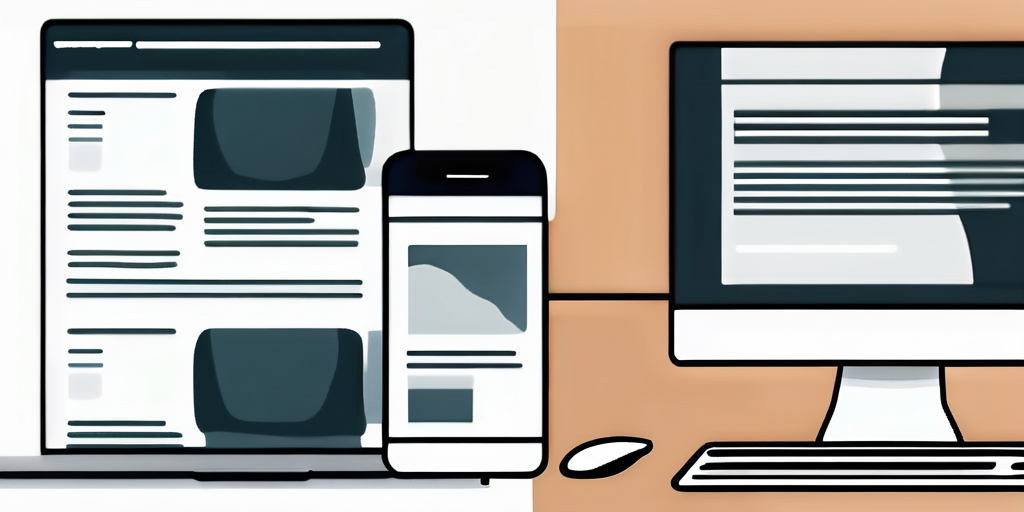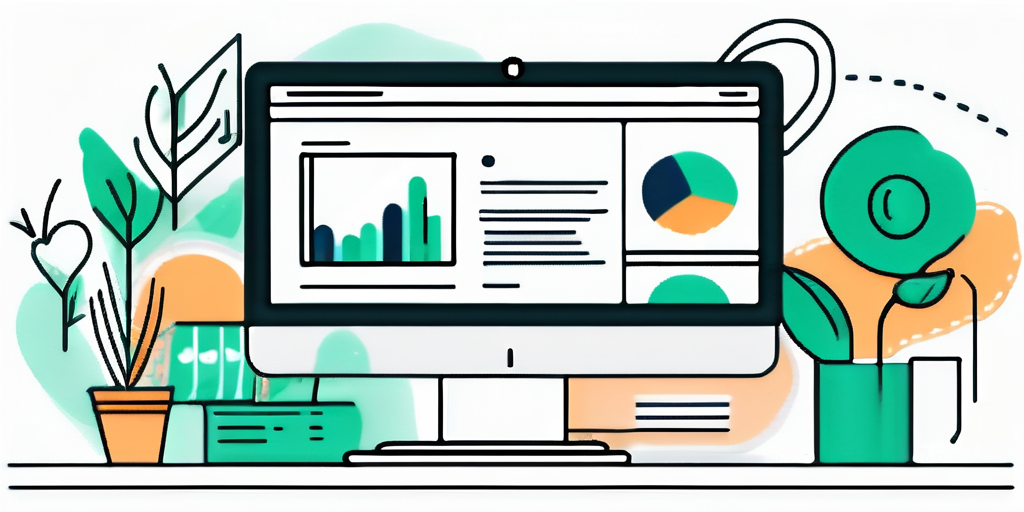The Essential Guide to Nonprofit Web Accessibility Standards

Web accessibility is a crucial aspect of creating an inclusive online environment. Nonprofits, in particular, have a responsibility to ensure that their websites are accessible to all individuals, regardless of disabilities. In this guide, we will explore the key components of web accessibility for nonprofits, including the understanding of web accessibility, legal requirements, key design elements, tools and techniques for improvement, and incorporating accessibility into your nonprofit’s web strategy.
Understanding Web Accessibility
Web accessibility refers to the practice of designing and developing websites that can be accessed and used by individuals with disabilities. This includes but is not limited to visual impairments, hearing impairments, mobility impairments, and cognitive impairments. The goal of web accessibility is to ensure that all individuals, regardless of their abilities, can perceive, understand, navigate, and interact with the information and functionality provided on a website.
Defining Web Accessibility
Web accessibility encompasses a wide range of considerations and principles to ensure equal access to online content. It involves providing alternative text for images to be read by screen readers, creating clear and concise navigation menus, using color contrast to enhance readability, and providing captions or transcripts for multimedia content.
Importance of Web Accessibility for Nonprofits
For nonprofits, web accessibility is not only a legal requirement but also a moral imperative. Accessible websites enable individuals with disabilities to access the valuable resources and services offered by nonprofits. By ensuring that your website is accessible, you demonstrate your commitment to inclusivity and expand your reach to a wider audience.
Let’s delve deeper into the importance of web accessibility for nonprofits. Nonprofit organizations play a crucial role in addressing social issues and providing support to vulnerable populations. However, without accessible websites, these organizations may unintentionally exclude individuals with disabilities from accessing their services and resources.
Imagine a visually impaired individual who is seeking information about a nonprofit’s programs and services. Without proper accessibility features, such as screen reader compatibility and alternative text for images, this individual may struggle to navigate the website and access the information they need. This not only creates frustration for the user but also hinders their ability to fully engage with the nonprofit’s mission and potentially benefit from their services.
Furthermore, web accessibility is not just about complying with legal obligations. It is about embracing diversity and ensuring that everyone has an equal opportunity to participate in society. By prioritizing web accessibility, nonprofits can foster a more inclusive environment and empower individuals with disabilities to actively engage with their initiatives.
Legal Requirements for Nonprofit Web Accessibility
Nonprofits must understand the legal requirements pertaining to web accessibility. Two key regulations are the Americans with Disabilities Act (ADA) and Section 508 of the Rehabilitation Act. These regulations establish guidelines for creating accessible websites and require nonprofits to make reasonable accommodations to ensure equal access to their online resources.
Overview of the ADA and Section 508
The Americans with Disabilities Act (ADA) was enacted in 1990 with the aim of prohibiting discrimination on the basis of disability. It ensures that individuals with disabilities have equal access to public entities, including nonprofits. When it comes to web accessibility, the ADA requires nonprofits to make their programs, services, and activities accessible to individuals with disabilities. This means that websites must be designed in a way that allows people with disabilities to navigate, understand, and interact with the content.
Section 508 of the Rehabilitation Act, on the other hand, focuses specifically on electronic and information technology accessibility. It applies to federal agencies and organizations receiving federal funding. Section 508 mandates that these entities make their websites and digital content accessible to individuals with disabilities. This includes providing alternatives for non-text content, ensuring compatibility with assistive technologies, and creating accessible forms and documents.
Consequences of Non-Compliance
Nonprofits that fail to comply with web accessibility standards may face legal repercussions. Lawsuits can be filed against organizations that do not provide equal access to their online resources, and these lawsuits can result in significant financial penalties. Additionally, the reputation of the nonprofit may be tarnished, leading to a loss of trust from the community it serves.
However, the consequences of non-compliance go beyond legal and financial implications. Inaccessible websites exclude individuals with disabilities from accessing vital information and participating in nonprofit activities. This not only goes against the principles of inclusivity and equal access, but it also undermines the very mission of the organization. Nonprofits exist to serve the community, and by neglecting web accessibility, they unintentionally exclude a significant portion of the population they aim to help.
Ensuring web accessibility is not just a legal requirement, but also a moral obligation for nonprofits. By making their websites accessible, nonprofits can create a more inclusive and welcoming online environment for individuals with disabilities. This not only enhances their reputation as an organization that values diversity and equal access, but it also allows them to reach a wider audience and have a greater impact on the community they serve.
Key Elements of Accessible Web Design
To create an accessible website, certain design elements must be considered and implemented. These elements ensure that individuals with disabilities can navigate and understand the content provided on the website.
When it comes to navigability and readability, clear and intuitive navigation is essential for individuals using assistive technologies, such as screen readers. Nonprofits should structure their websites with logical navigation menus, headings, and labels to enable users to easily navigate through the site. By organizing the content in a way that makes sense, individuals with disabilities can efficiently find the information they need, enhancing their overall browsing experience.
In addition to navigation, providing sufficient color contrast and choosing readable fonts also play a crucial role in accessibility. For individuals with visual impairments, colors with a high contrast ratio ensure that they can distinguish between text and background. This allows them to read the content without any difficulty. Moreover, using web-safe fonts and avoiding elaborate typography further enhances accessibility across different devices and platforms. By keeping the font choices simple and legible, nonprofits can ensure that their message reaches a wider audience, regardless of their visual abilities.
Another important aspect of accessible web design is multimedia accessibility. Alternative text, also known as alt text, provides textual descriptions of images that can be read by screen readers. This enables individuals with visual impairments to understand the content and context of the images. Similarly, providing captions, transcripts, or audio descriptions for multimedia content, such as videos, ensures that individuals with hearing impairments can access the information being presented. By including these accessibility features, nonprofits can make their website inclusive and welcoming to all users, regardless of their abilities.
By incorporating these key elements of accessible web design, nonprofits can create websites that are user-friendly and inclusive. This not only benefits individuals with disabilities but also improves the overall user experience for all visitors. So, let’s strive to make the web a more accessible place for everyone!
Tools and Techniques for Improving Web Accessibility
Ensuring that websites are accessible to all individuals, including those with disabilities, is crucial for nonprofits. Fortunately, there are various tools and techniques available to assist organizations in improving the accessibility of their websites. These resources enable nonprofits to evaluate their website’s accessibility and address any issues that may hinder access for individuals with disabilities.
One of the most valuable resources for nonprofits is automated web accessibility evaluation tools. These tools scan websites and identify potential accessibility issues. They analyze HTML markup, CSS stylesheets, and JavaScript to detect errors and provide suggestions for improvement. By using these automated tools, nonprofits can quickly identify common accessibility issues and make necessary adjustments. However, it’s important to note that automated tools should be used as a starting point and not as the sole method of evaluation. Manual testing is essential to ensure comprehensive accessibility.
Automated Web Accessibility Evaluation Tools
Automated web accessibility evaluation tools are incredibly helpful for nonprofits looking to improve the accessibility of their websites. These tools can scan a website’s code and identify common accessibility issues such as missing alt text for images, improper heading structures, and inconsistent link labeling. They provide detailed reports that highlight areas for improvement, making it easier for nonprofits to prioritize and address accessibility concerns.
However, it’s important to remember that automated tools have their limitations. They can only detect issues that can be identified through code analysis, and they may not capture all aspects of accessibility, such as the usability of interactive elements. Therefore, manual testing is crucial to ensure that a website is truly accessible to all users.
Manual Testing for Web Accessibility
Manual testing involves using assistive technologies, such as screen readers and keyboard navigation, to assess a website’s accessibility. By experiencing the website through the lens of individuals with disabilities, nonprofits can gain valuable insights into potential barriers and make necessary improvements. Manual testing allows organizations to identify and address specific issues that may not be detected by automated tools.
During manual testing, nonprofits can evaluate how well their website works with screen readers, which are assistive technologies used by individuals with visual impairments. They can also assess the website’s keyboard accessibility, ensuring that all functionality can be accessed without the need for a mouse. By conducting manual testing, nonprofits can optimize the accessibility of their websites, making them more inclusive and user-friendly for all individuals.
Incorporating Accessibility into Your Nonprofit’s Web Strategy
Making web accessibility an integral part of your nonprofit’s web strategy is essential for long-term success in serving individuals with disabilities. By integrating accessibility considerations into every aspect of website development and ongoing maintenance, nonprofits can create an inclusive digital environment.
Building an Accessibility-Friendly Culture
Creating awareness and fostering a culture of accessibility within your nonprofit is crucial. Educate staff members and volunteers about web accessibility standards and provide training on accessible design and development practices. By promoting accessibility as a priority, you ensure that your organization consistently strives to meet the needs of all individuals.
Ongoing Maintenance and Updates for Accessibility
Web accessibility is an ongoing process. Nonprofits should regularly monitor and evaluate their websites for accessibility compliance, addressing any identified issues promptly. Moreover, staying updated with the latest accessibility guidelines and incorporating them into website updates and new projects ensures continued accessibility for individuals with disabilities.
By prioritizing web accessibility, nonprofits can maximize their impact by reaching a broader audience, supporting the inclusion of individuals with disabilities, and fulfilling their mission to serve the community. Incorporate the essential guide to nonprofit web accessibility standards into your organization’s web strategy, and make a significant difference in creating an inclusive online environment.
Ready to ensure your nonprofit’s digital presence is not only accessible but also impactful? At BlueWing, we’re dedicated to helping organizations like yours thrive in the digital landscape. From mastering the complexities of the Google Ad Grants program to managing your paid social media and search campaigns, we’re here to build a sustainable growth engine for your cause. Contact us today to learn how we can help you outperform industry benchmarks and amplify your impact.





